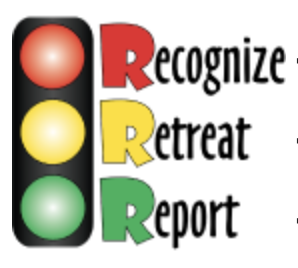14/01/2024 Stati Uniti (United States-USA), Illinois (Il), Knox County, Galesburg
“If you ever come across anything suspicious like this item, please do not pick it up, contact your local law and/or enforcement agency for assistance”.
By U.S. Army Joint Munitions Command
Unexploded ordnance (UXO) refers to explosive devices that were deployed during military conflicts, research, development, testing and evaluation but failed to detonate as intended. UXO can be found in various forms, such as artillery shells, bombs, landmines, grenades, and other various forms. These deadly remnants can remain hidden for years, posing a severe risk to unsuspecting individuals who may encounter them. It is crucial to understand the dangers associated with UXO, and how to respond appropriately to mitigate risks. UXO poses a grave threat to individuals and communities around the world. To minimize the risk of accidents, it is crucial to follow established safety protocols. The Army method is the “Recognize, Retreat, Report” approach, which is a safety protocol designed to guide individuals in the event they encounter UXO and emphasizes immediate recognition of potential UXO hazards. Following this method is essential for personal safety and reducing the likelihood of accidents.
Step 1: Recognize
Recognition is the first step in the R3 method. It involves identifying potential UXO and understanding their characteristics. If you come across objects that resemble military ordnance, rusty metal objects, or suspicious items, exercise caution and assume they may be UXO. Be vigilant when exploring unfamiliar construction sites, or former military training grounds. Educate yourself on the types of UXO commonly found in your region and their distinguishing features.
Step 2: Retreat
Retreating to a safe distance is critical to minimize the risk of injury or death in the event of a UXO detonation. Once potential UXO is recognized, move away immediately, ensuring you maintain a safe distance from the suspected hazard. The distance may vary depending on the specific guidelines provided by local authorities, but a minimum of 300 feet is generally recommended. Encourage others in the vicinity to do the same and avoid any unnecessary risks.
Step 3: Report
Reporting the presence of UXO to the appropriate authorities is crucial for public safety. Contact local law enforcement, military personnel, or the nearest bomb disposal unit to inform them about the potential UXO sighting. Provide detailed information about the location, size, and appearance of the suspected ordnance. It is essential not to tamper with or attempt to move the UXO, as this can be highly dangerous. Remember, only trained professionals should handle UXO to avoid accidents. About JMC: Headquartered at the Rock Island Arsenal, the U.S. Army’s Joint Munitions Command provides precise and predictive conventional munitions sustainment and life cycle management to an expeditionary global force from 17 arsenals, depots, and ammo plants across the spectrum of conflict in support of the Joint Force.
Photo-Source: wgil.com
For more information visit denix.osd.mil/uxo
If you find anything that appears to be an explosive device, do not touch it, leave it where it is and call the police. We will contact the appropriate agencies to properly dispose of the item.
Dear editors, Biography of a bomb is aimed at highlighting the danger caused by unexploded bombs. Moreover, the most important aspect is that we work completely non profit, what drives us is raising awerness about this topic. We make use of your pictures and articles, but we need them to put a context in how findings are done. We trust in your understanding. We will (and we always do) cite the source and the author. We thank you for your comprehension





